How to properly taste caviar?
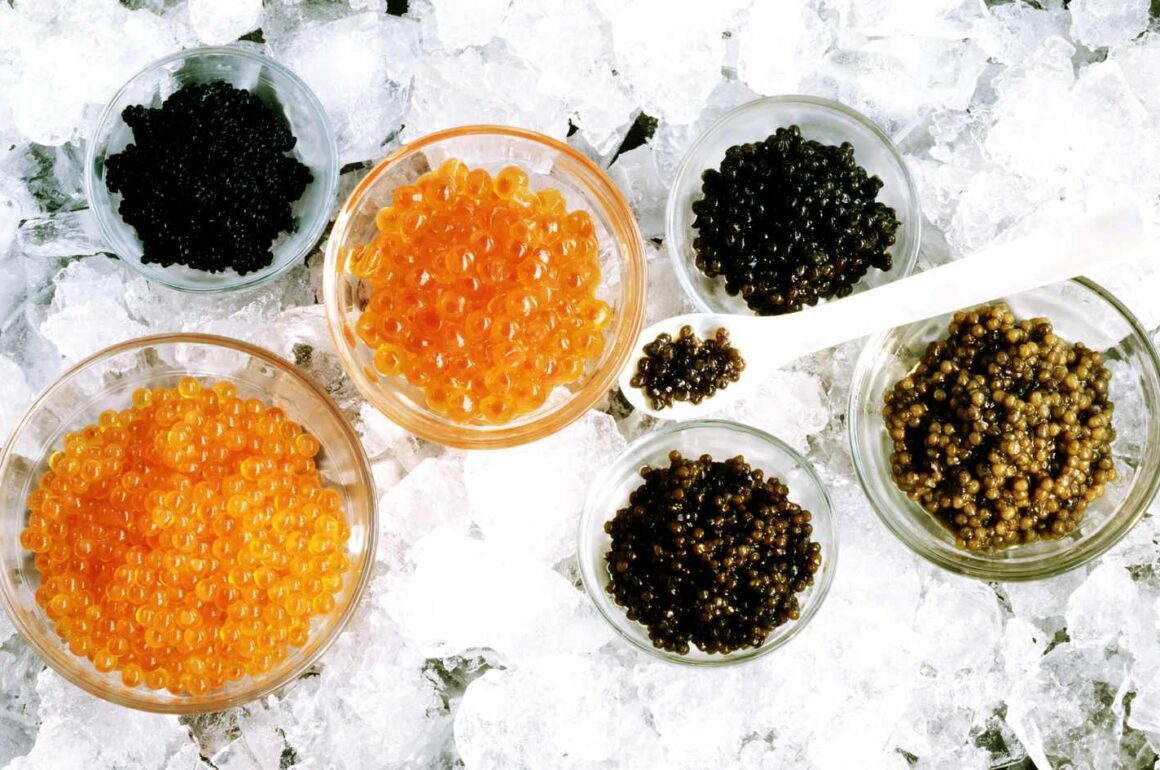
Caviar is one of the most exclusive products. We usually eat it in special circumstances, in restaurants or during exquisite dinners. But what if we want to serve caviar at a party or turn it on as part of a tasteful dinner with friends? Is there a way to do it how to properly taste caviar? How to choose a product that will be the best? What color of caviar is the most expensive and how is it obtained?
The history of caviar
Caviar has a long and fascinating story, reaching ancient times. At that time, he was considered a rarity. Initially, it was consumed by ancient Persians and Greeks, who discovered that Sturgeni eggs, transformed into caviar, were not only tasty, but also healthy. The tradition of drinking caviar and eating it in an elegant form developed in Russia in the 18th century, where it became a symbol of sophistication and luxury.
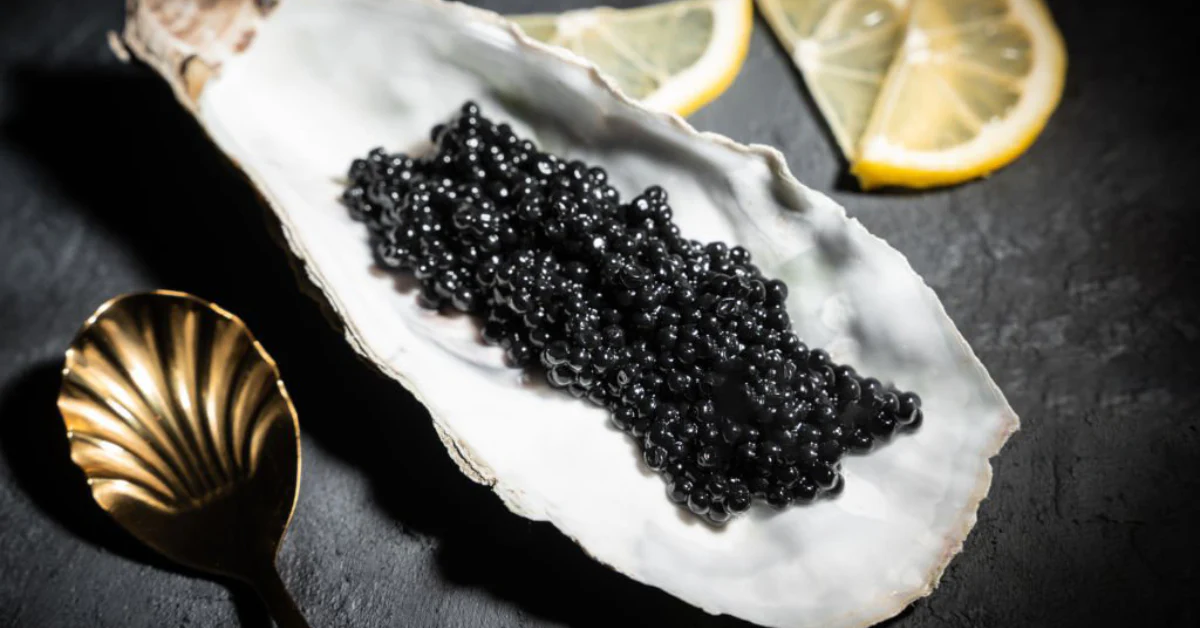
Over time, thanks to trade, caviar reached Western Europe. At the same time, his popularity flourished at the royal courts and among the aristocracy. Russian caviar from Bieta, once favorite at the tsarist palace, became a symbol of status at the beginning of the 20th century. The tradition of tasting caviar has not changed to this day – it is still served in an elegant way, often in a chilled dish, preferably with a light company of vodka or champagne. An interesting fact is that once caviar was treated not only as a delicacy, but also a valuable medical raw material, recognized as the elixir of youth. Today, although available to a wide range of gourmets, caviar still remains synonymous with luxury. So how do you taste caviar and how does his food affect health?
Is caviar food healthy?
Caviar is a real treasury of nutrients, which a small portion can provide the body with valuable health supporting substances. Per 100 g of caviar, we can count on an impressive amount of protein-up to 25-30 g. Therefore, it is a great source of full-fledged protein, supporting tissue regeneration and muscle structure. It is also worth emphasizing the presence of omega-3 fatty acids, which are extremely important for heart and brain health. They reduce inflammation and supporting memory and concentration. Caviar is also a real mine of vitamins: vitamin A caring for eyesight, vitamin D supporting the immune system, vitamin E acting as a strong antioxidant, and vitamin B12, which affects energy production and proper functioning of the nervous system.
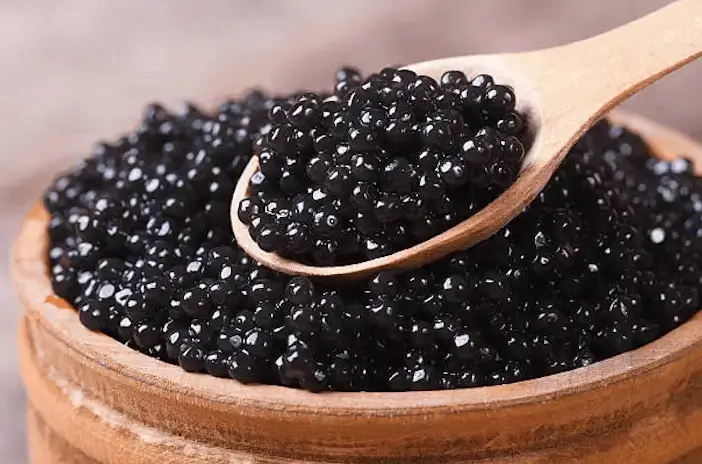
There are also minerals: selenium, zinc and iron are elements that help strengthen immunity, improve skin condition and support the production of red blood cells. Although caviar contains fats (about 15-20 g per 100 g), these are mostly healthy unsaturated fats that have a positive effect on cholesterol levels. Caviar fits perfectly into the Mediterranean, Ketogenic and Low Carbide diet.
A small portion of this luxurious delicacy perfectly satisfies the demand for valuable nutrients. The richest source of all these benefits is a sturgeon caviar, which is distinguished by its exceptional quality and high concentration of valuable substances. Although it can be treated as a delicacy for the chosen ones, it is worth knowing that caviar is not only an elegant addition to special occasions. This is a real health bomb that can be introduced into a daily diet in small but valuable portions.
What color of caviar is the most expensive?
The most expensive and most exclusive caviar in the world is the white Almas caviar, derived from a rare, albinotic sturgeon of Bieta. Its golden, almost pearl color and unique creamy consistency make him reach dizzying prices – even tens of thousands of dollars per kilo! When it comes to health, the most valuable is sturgeon caviar, rich in omega-3 fatty acids, protein and vitamins. There are many varieties of caviar, and its color depends on the fish species:
- Black (graphite, grayish, silver, bronze) – comes mainly from sturgeon (BIERID, Osietra, Sevruga).
- Zloty – the rarest, often from albinotic sturgeon varieties (e.g. Almas).
- Red – salmon icra (Chum, Sockeye, Keta).
- Orange – trout caviar or various salmony species.
- Yellow – e.g. caviar from Sielawa or other smaller fish.
In 2024, the price of Almas caviar, the most expensive in the world, still remains astronomical. Its cost can reach up to 25,000 – 30,000 dollars per kilo. Such a high price is due to its rarity – comes from extremely ancient, albinotic sturgeons of Bieta, which can live for over 100 years. The process of obtaining this caviar is time consuming and requires precise processing, which also affects its high price. Almas is often sold in elegant, decorative cans or jars that emphasize the luxurious nature of the product. It’s real Symbol of prestige, available mainly for a very narrow circle of lovers of luxurious rarities.
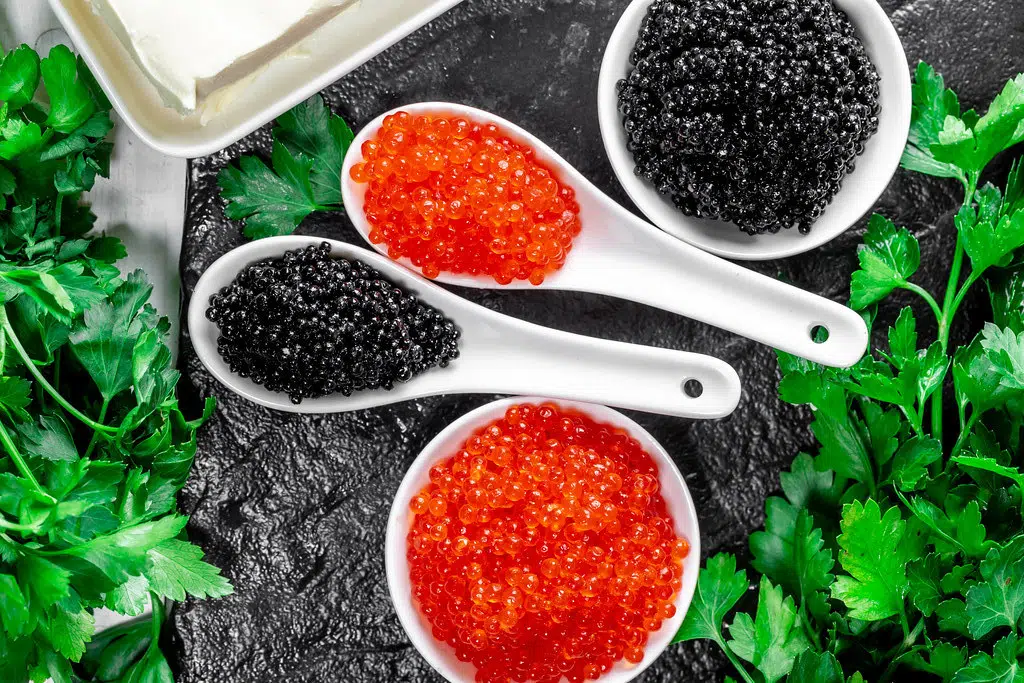
And how to taste this most expensive caviar? Preferably fully classically. Cold, without additives, applied to a special a teaspoon of pearl, gently melting on the tongue, with a glass of chilled vodka or champagne. This is a real rarity that is worth enjoying slowly, discovering its unusual, subtle nutty taste!
How to taste caviar?
How to taste caviar to really feel its unique taste? First of all, a piece of this luxurious delicacy deserves the right setting. Caviar should be well chilled, but never frozen. Therefore, it is best to store it in the fridge, and put it in a bowl filled with ice before serving. This is how it is served in the best restaurants.
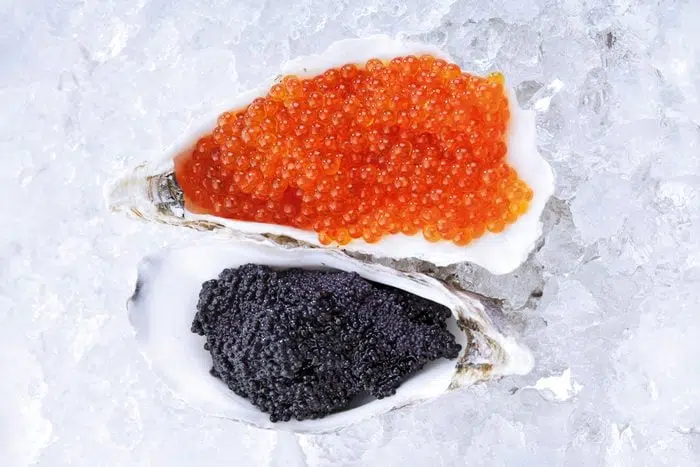
The application temperature is the key to releasing the full taste. So how is it best to give it to guests to emphasize his uniqueness? Traditionally, it is served on pancakes. However, it will also work with a piece of dark bread or cooked potatoes in shells, served with sour cream. Remember not to use metal teaspoons – they can affect the taste of caviar. Choose those with a pearly spoon to avoid changing taste.
And how to eat caviar to bring out its full taste? Traditionally, a piece of caviar is applied to the hand, between the thumb and the index finger – because who would not like to feel the velvet consistency just before putting it in your mouth? So, what occasion will you give caviar – exquisite dinner or just for pleasure?
Caviar – recipes and ideas for application. Learn how to taste caviar?
Caviar is a luxurious accessory, which goes well with many dishes, adding elegance and a unique taste. Blins with sour cream are a classic – small, fluffy pancakes, which are an ideal base for caviar, emphasizing its taste. If you want to try something new, caviar on a piece of dark bread with a little butter and fresh dill is a combination that will delight every gourmet. Szczypiorek also fits in place of the dill. Potatoes cooked in shells with sour cream are another great option – their neutral taste perfectly emphasizes the intensity of caviar.
For more exquisite dishes, try caviar with pieces of delicate Wagyu beef or serve it as an appetizer with a slightly chilled champagne. Caviar also fits light salads. For example, with avocado, cucumber and hard -boiled egg, where its intense taste goes well with the freshness of vegetables. It is worth remembering that caviar It tastes best when served in small quantities. This allows you to fully appreciate its taste and exceptional consistency.




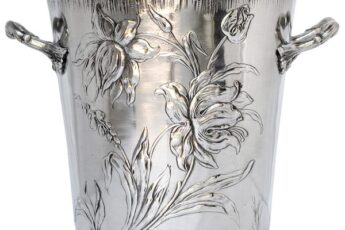


Leave a Comment